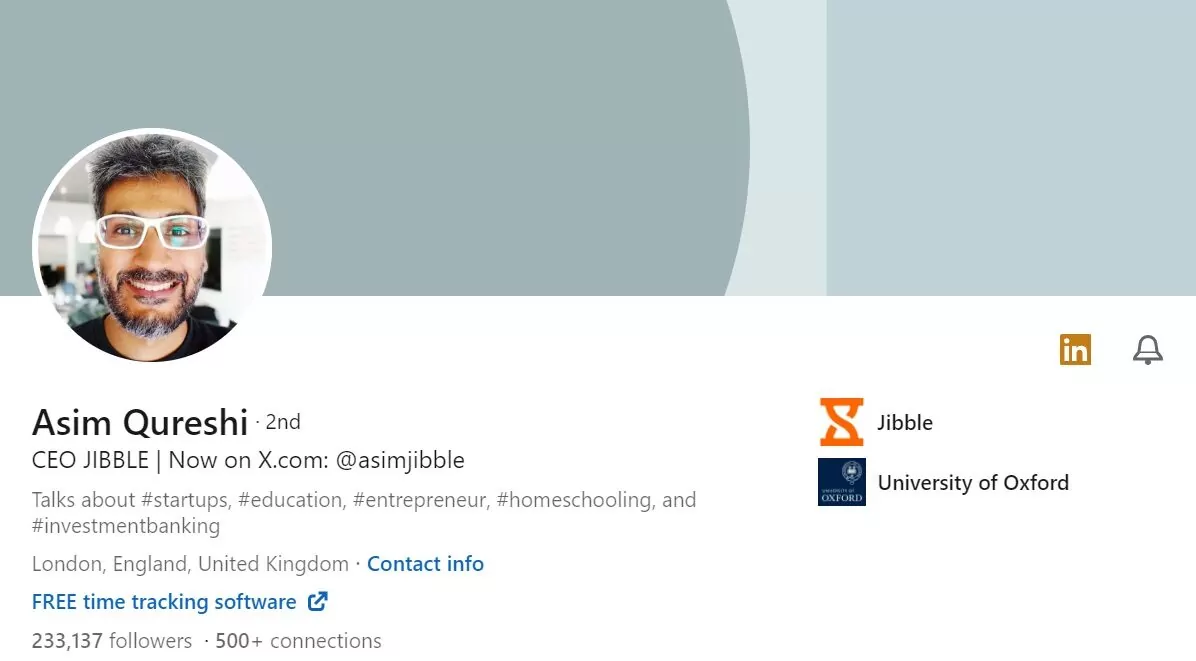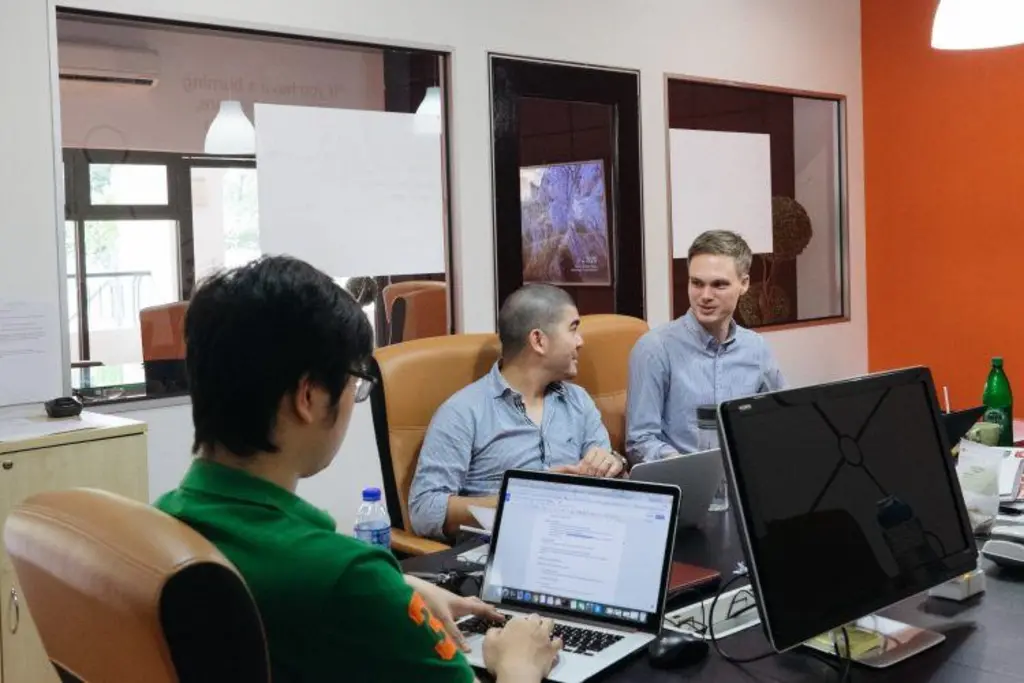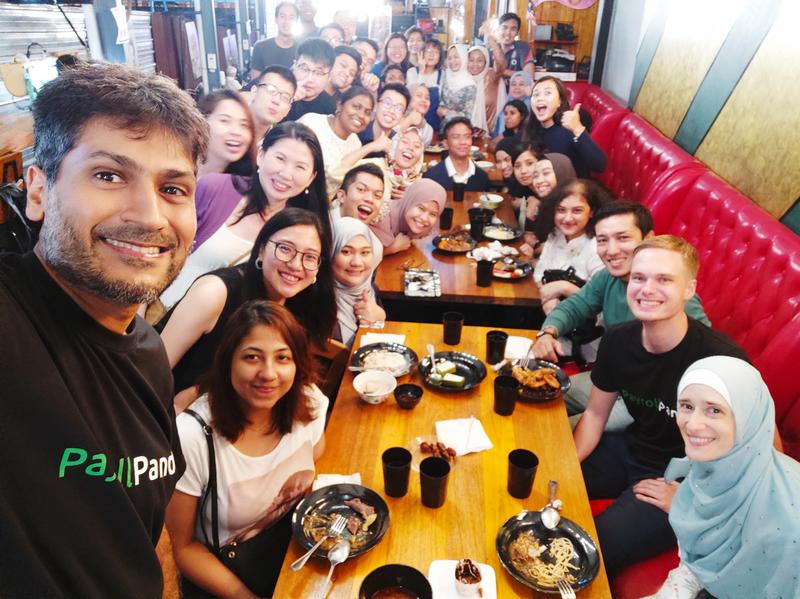When I left JP Morgan years ago many people thought I was insane. I mean, I was walking away from a promising career in the investment banking industry, not to mention a guaranteed US$700k annual pay package.
Looking back at it now, I have to agree with them. I was truly a bit mad. But, I mean, you have to be a bit mad to take a risk, right?
A few years down the road, and I think it’s safe to say, that risk did pay off in the form of the billion-dollar time tracking software company we were able to build – Jibble.

The new standard in employee time tracking.
How Jibble Started
Let’s backtrack a little. A lot of people think it was all smooth sailing to get to where we are now. But let me tell you, it really wasn’t.
Jibble was the 5th startup I launched as a venture builder. Before Jibble, I launched a whole bunch of startups rooted in filling the gaps we felt existed in the market.
In 2010, I co-founded ThinkProperty.my, a property website that we sold for what was then the highest publicly announced amount paid for a website in Malaysia. I also worked on Skoot, a part-time job site, and Teyoot, a T-shirt crowd-buying site. Both took off but didn’t really rake in as much cash flow for them to be worth continuing. You see, we wanted to focus on the big stuff. Fast forward to 2015, we launched Mulah Rewards, a loyalty app for retail, which is now Malaysia’s no.1 digital loyalty program.
What can I say? You win some, you lose some. But if you look at it retroactively, you’re actually winning either way because of all the lessons you get from every single venture. More on that later.
The pivot to Jibble happened when we launched PayrollPanda, an online payroll, and HR software aimed to simplify payroll for businesses in Malaysia. PayrollPanda was already performing extremely well. But then my good friend Fawad suggested it would even be a more powerful product with a built-in time tracking software. He was right.
There was indeed a need for reliable time tracking software, not just in Malaysia but also in international markets. And we were in just the right position to fill that gap.
The idea was to keep running PayrollPanda as a standalone business focusing on the Malaysian market. Jibble, on the other hand, would be an international product that would be built to accommodate the time tracking needs of businesses all over the globe. And that was when the floodgates opened.
How Jibble Became a Billion-Dollar Time Tracking Software Company
The entire story of how we built Jibble into the company it is today is a story of grit and focus. As with everything, we had to start from scratch, and here are some of the guiding principles that made us into a billion-dollar time tracking software company:
- Start with just half a product.
- Bet on people, not on the business plan.
- Connect with the right people.
- Let your product do the talking.
- Grow your site traffic organically.
- Work EXTRA hard.

1. Start with just half a product
This doesn’t sound all that conventional, does it? Let me explain.
Instead of waiting to perfect every aspect of a product before launching, consider building just half of it. It might seem counterintuitive, but it’s a strategy that forces you to focus on what truly matters, avoids wasting resources on unnecessary features, and allows for faster iteration based on real user feedback. By starting with a minimal viable product (MVP), you can get your product out into the market sooner, learn from your users, and iterate and improve from there. It’s all about prioritizing efficiency and responsiveness over perfectionism.
“Keep lean, keep pivoting, keep moving.”
We first launched Jibble as just a basic time tracking tool. Over time, we have developed it further and added several advanced features for attendance tracking, leave management, scheduling, and reporting. We’ve even added GPS tracking, geofencing, facial recognition, and screen monitoring to the mix. We update and evolve based on what our users need.
So don’t get too caught up in launching the perfect product immediately. Get your product out there and keep improving it as you go. Building just half a product allows you to enter the market faster, validate if your ideas work, and eventually build a stellar offering that people actually need.

2. Bet on people, not on the business plan
You might assume that investors meticulously pore over every aspect of your business plan before making a decision. However, my experience has shown otherwise.
The first few times I pitched to our initial investors, they surprised me by cutting to the chase. They weren’t all that interested in the business specifics or technicalities. Rather, they were more interested in me and what they believed I could do. My first pitch landed Jibble an investment of US$1 million, marking a transformative moment for Jibble, which had previously relied largely on my own funding.
This whole process taught me a key lesson: when considering investment opportunities or betting on people’s ideas in general, it’s essential to focus on the people behind the business rather than just the business plan. Business plans can evolve, but the individuals driving the venture forward remain constant.
Keep this in mind for your next pitch to those big business tycoons. Remember to emphasize not just the idea but also the passion, dedication, and capability of the team behind it. After all, it’s the people who ultimately make the difference in the success of a venture.

3. Connect with the right people
Connecting with the right people can go a long way when it comes to building and growing a company. It not only helps in promoting your product but also opens doors to opportunities that can propel the company forward.
When it comes to networking and marketing, my platform of choice is usually LinkedIn. I’ve managed to grow over 500 connections and over 233,000 followers on the platform, which I think is pretty crazy. The platform has undoubtedly been instrumental in expanding Jibble’s reach.
Each of my posts garners around 150,000 views, serving as a powerful marketing tool for our brand. Through my LinkedIn posts and connections, I’ve acquired loyal clients and had the privilege of recruiting talented individuals who have contributed significantly to our team’s growth.
The key lesson here is this: Leverage your existing network. By cultivating meaningful connections and leveraging platforms like LinkedIn, you can unlock a wealth of opportunities for your business’s growth and success. No need to pay thousands of dollars on marketing!

4. Let your product do the talking
A huge part of Jibble’s growth stems from our commitment to quality. After several years of developing Jibble from a basic time clock to essentially an all-in-one work management tool, we have witnessed firsthand the power of a great product. Instead of relying heavily on traditional marketing tactics, we focused on refining our offering to meet the evolving needs of our users.
Despite having a team of 70, notably without dedicated marketing personnel, we’ve secured contracts with prestigious institutions like Tesla and Harvard University. And interestingly, these organizations reached out to us!
Word-of-mouth has been our strongest ally. Once Tesla and Harvard began using Jibble, others quickly followed suit, recognizing the value and efficiency our platform brings to their operations.
Our strategy has always been to prioritize product excellence over paid marketing. We’ve focused on creating a product so exceptional that it speaks for itself. That’s what businesses in the big leagues do. Take Tesla, for example – they’ve achieved remarkable success without extensive marketing campaigns. Similarly, many other highly successful companies have relied more on the strength of their product than on advertising budgets during their early stages.
Jibble is the same. We firmly believe that:
“A superior product can win you over more clients than paid marketing ever will.”

5. Grow your site traffic organically
Site traffic matters a lot especially in this digital age. No matter how good your product is, you can’t grow exponentially and become a billion-dollar time tracking software company without having a strong online presence. When people search for something related to your product on the internet, you want them to see you. But how do you do that? Well, the answer is content. Not just content, but quality content.
“Like our products, we put extra effort into creating quality content for our site visitors.”
By creating high-quality content tailored to the needs and interests of our target audience, we not only attract more visitors to our site but also establish credibility and authority in our industry. Whether it’s informative blog posts, engaging videos, or insightful guides, we are committed to delivering content that adds value and resonates with our audience.
Each person that ends up on your site has the potential to turn into your paying clients and customers. So the moment they get there, you want the quality of the content they see to reflect the quality of your product. I could go on and on about this but if you’re interested to know further, here’s how we torpedoed our google traffic to dominate time tracking, all without a single paid ad!

6. Work EXTRA hard
Elon Musk wasn’t wrong when he said:
“Starting a business is not for everyone. Generally, starting a business, I’d say, No. 1 is to have a high pain threshold.”
Entrepreneurship is not for the faint of heart. I’ve seen colleagues who were lawyers and PhD students venture into entrepreneurship and struggle like crazy. Some of them stuck it out and eventually found some success. Others didn’t have the guts to carry on just a few months in and fell back into their previous jobs.
Business isn’t for everyone, and your degree and law certificates don’t mean anything over here. Success in business is not handed out based on qualifications; it’s earned through sheer determination and grit.
You’ll fail a few times, that’s for sure. But you need to be quick on your feet and be willing to pivot or abandon ventures if necessary. This is why I initially said it’s better to build a minimal viable product (MVP) than to go all the way and spend thousands of hours on a fully developed product that you’re not even sure will attract much demand.
“Business is brutal, and there is no substitute for hard work.”
Exert your effort wisely. Truly, there is no substitute for hard work, but you also need to be working in the right direction and working with the right people to achieve optimal results.
How Jibble is Making a Difference
Jibble’s goal has always been to create a product that would make a real impact on people’s lives and the way they work. And through a painstaking and ongoing process of product development, we have been able to do just that.
As of today, Jibble is used by thousands of companies worldwide to streamline their operations, boost productivity, and gain valuable insights into their workforce. Our innovative time tracking software has become an indispensable tool for businesses of all sizes, from massive corporations like Tesla to startups and even freelancers working from their home offices.
But it’s not just about the numbers. What truly drives us is the impact we’re having on people’s daily lives. We hear stories from our users about how Jibble has helped them save time, reduce administrative burdens, and improve team collaboration. These stories fuel our passion and motivate us to continue innovating and improving our products.
Beyond just time tracking. Jibble is making a difference by fostering a culture of accountability and transparency within organizations. With our advanced features, such as facial recognition and GPS tracking, employers can ensure that work hours are accurately logged and that remote teams are accountable for their time. This level of visibility not only enhances trust and accountability but also enables businesses to make data-driven decisions to optimize their operations.
And that is the Jibble difference.

What the Future Looks Like for Jibble
We are humbled by how far we’ve come. And as cliche as it may sound, it wouldn’t have been possible without the most hardworking global team and my beyond-supportive family. It’s been a real journey, and it’s definitely far from over.
As a billion-dollar time tracking software company, we now have almost unlimited resources on our hands, contrary to how we first started. But despite this, or maybe because of it, we have become even more intentional in our moves, ensuring that we stay true to our values and goals.
As we move forward, our focus remains on innovation, growth, and, above all, making a positive impact. We’re staying focused, staying hungry, and continuing to push ourselves to new heights. Cheers!



